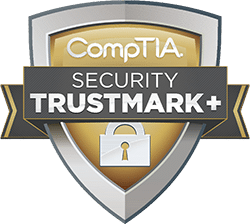Healthcare providers best business continuity solution
A reliable business continuity plan is crucial for all businesses, but none more so than the healthcare sector.
Healthcare providers handle some of the most sensitive data and personal records available, and it’s vital that you know how to properly keep this data safe and accessible in times of disaster.
Here’s an overview of business continuity planning and what it means for your business.
Business continuity: what you need to know
A business continuity plan helps to keep your company running during an emergency or a disaster.
Every plan should outline how you’ll cope with disruption to key infrastructures, such as networks, communications, and file archives. Business plans should address four key areas:
- Disaster recovery – e.g. how to recover data if the primary data center is lost or destroyed
- Compliance – e.g. how you plan on complying with obligations under healthcare privacy laws
- Continued operations – e.g. how to keep running during outages
- Availability – e.g. how to access data from a remote location, and how to remain in contact with personnel
Essentially, business continuity plans help you remain operational during emergencies while upholding your various privacy law obligations.
How business continuity planning supports healthcare providers
If there’s one industry, in particular, that’s vulnerable to serious harm caused by outages and lost data, it’s the healthcare industry.
Healthcare providers are particularly vulnerable to cyber-attacks and data breaches. In 2019 alone, over 38 million US healthcare records were exposed, and over 93 percent of healthcare providers have suffered a data breach in the last five years.
What’s more, healthcare breaches are among the most expensive, with breaches costing providers at least $150 per record lost.
The good news is that a disaster management plan helps you mitigate these risks, fulfill compliance obligations, and reduce your financial costs.
Here’s how to build a solid business continuity plan to support your unique sector needs.
Related Article:
Think holistically
Consider every area of your business that may be affected by an outage or service disruption. Although your network is critical, it’s not the only area you must consider.
Alongside protecting your network infrastructure, you need to protect elements such as:
- Data centers
- Sensitive documents
- Backup data
- Routers and other hardware
To protect your company effectively, look at the consequences of various emergencies, such as a network outage, and the ripple effect this event has on your entire operations.
There’s no such thing as being over-prepared for emergencies.
Test your strategy
A business continuity solution is only effective if it works.
Don’t wait until disaster strikes to test out the suitability of your continuity planning – test your efficiency and capabilities now. Make a note of any shortcomings and decide how to address them.
You should reevaluate your business continuity solution whenever your company expands or your services change. Audit and test your plan at least semi-regularly.
Seek expert help
Devising an effective business continuity plan may seem daunting, which is why it’s always best to seek expert IT advice to help you get started.
A managed service provider (MSP) can help you design a HIPAA-compliant continuity plan that protects your data, reduces your cybersecurity risk, and keeps your business running as smoothly as possible.
Business continuity is critical for any healthcare provider
Without a reliable business continuity plan, your business is susceptible to costly downtime, losing sensitive data, and significant reputation damage.
For more advice on devising an effective business continuity strategy, contact us today.
















